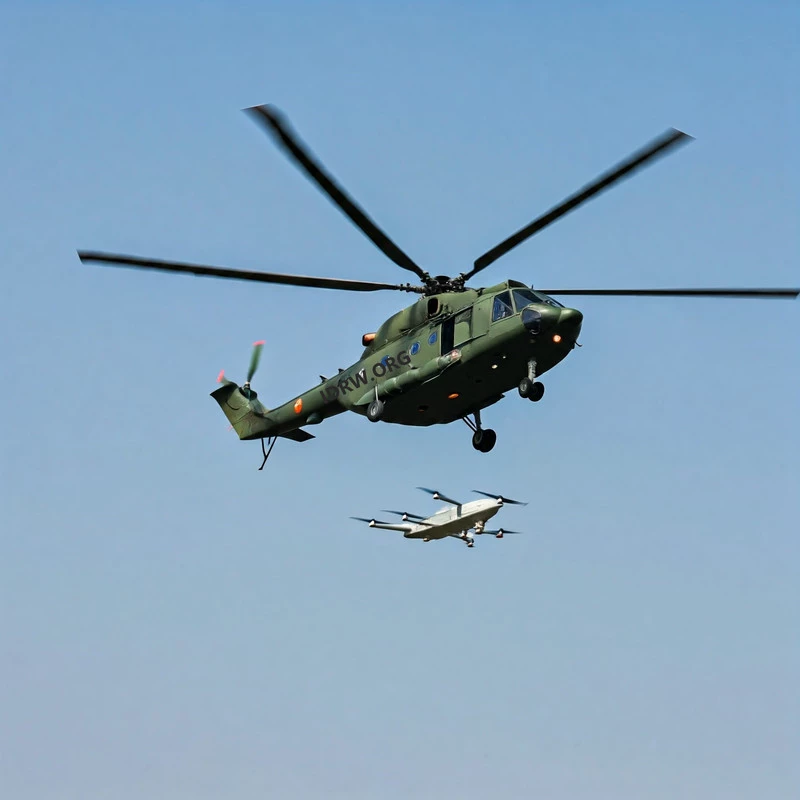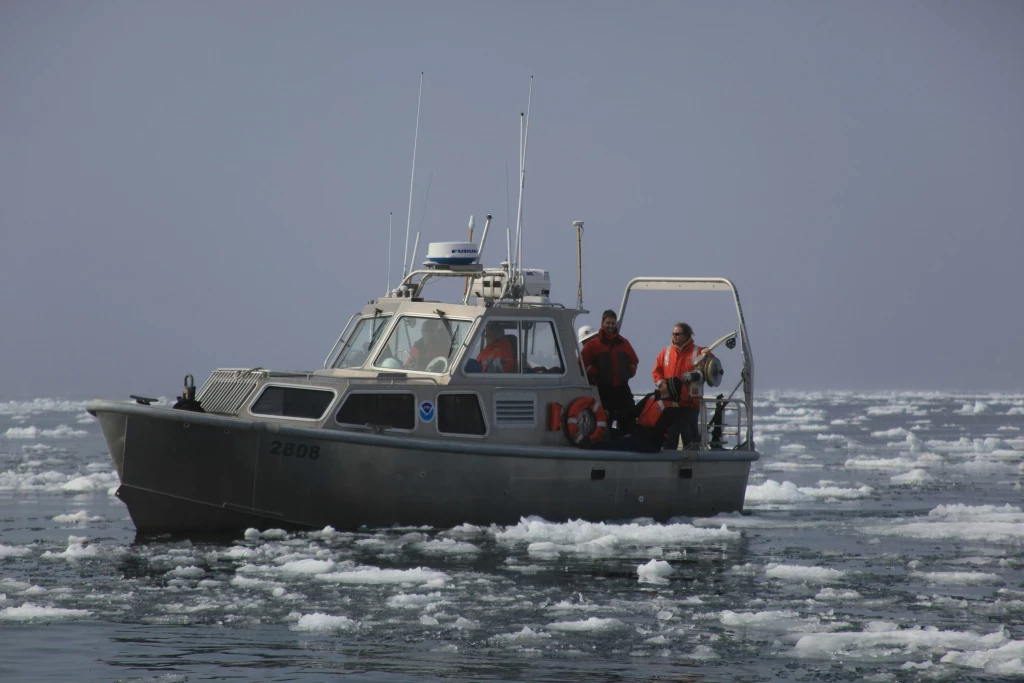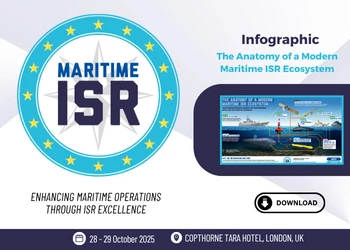What Do Naval Intelligence Leaders and Industry Need From The Next Generation of Maritime ISR?
Add bookmark
What is Maritime ISR and why is it essential for maritime operations?
Maritime ISR (Intelligence, surveillance and reconnaissance) refers to the coordinated use of assets across subsurface, surface air and space domains to collect and process information that supports naval operations.
As highlighted in the UK’s newly released Strategic Defence Review (SDR) 2025, maintaining advantage in an increasingly contested, congested and complex maritime domain requires the integration of next-generation ISR capabilities. For naval intelligence leaders, this places a premium on platforms and systems that can deliver persistent surveillance, multi-source data fusion, and real-time situational awareness.
From high-altitude platforms, like the P-8A Poseidon, to shipborne systems on the Royal Navy’s Type 26 frigates,ISR capabilities are central to threat detection and decision-making across operational theatres. Currently, NATO and coalition partners are seeking to strengthen maritime domain awareness, meaning the strategic value of ISR continues to grow.
Requirements set by naval intelligence leaders
Timeliness and precision have become critical in this domain. Naval decision-makers aspire to have real-time intelligence to proactively and reactively counter maritime threats. The UK's SDR highlights the urgency of this capability, noting the increasing vulnerability of critical maritime infrastructure, such as undersea pipelines and data cables, and the strategic significance of emerging geopolitical pressures in areas like the High North.
Interoperability has also become increasingly central to naval intelligence. To enable seamless intelligence-sharing, initiatives such as NATOs Joint Capability Group on Maritime Unmanned Systems (JCGMUS) have prioritised interoperable ISR platforms and data standards across allied nations. Similarly, collaboration within the Five Eyes intelligence-sharing alliance (Australia, Canada, New Zealand, the UK, and the US) continues to strengthen through joint operations and standardised ISR technologies.
The demand for persistent surveillance is driving operators towards platforms that can deliver continuous maritime situational-awareness. One example comes from the US Navy’s MQ-4C Triton Unmanned Aerial Vehicle (AUV), now operational in the Indo-Pacific, providing extended ISR coverage over vast maritime spaces. Such platforms are crucial for tracking and deterring threats around critical infrastructure, sea lanes, and strategic chokepoints.
Furthermore, naval intelligence requires advanced capabilities to integrate and synthesise data from multiple sensor platforms and domains. The UK's recent strategic initiative, Atlantic Bastion, exemplifies this approach, using a comprehensive, multi-domain sensor network operating above, on, and below the surface, integrating crewed and autonomous platforms to deliver a unified maritime intelligence picture for securing the North Atlantic.
Innovations driving next-generation maritime ISR
Uncrewed and autonomous systems
The UK's SDR reflects a notable shift towards integrating crewed, uncrewed, autonomous vessels and aircraft to better tackle maritime threats. Central to this approach is the Royal Navy's NavyX programme, which actively trials cutting-edge autonomous technologies. One example is the Cetus XL Autonomous Underwater Vehicle, named Excalibur, recently awarded to Plymouth-based manufacturer MSubs. This system provides long-endurance, deep-water surveillance, significantly enhancing the UK's underwater naval intelligence capabilities.
Meanwhile, in the states, the US Navy’s Task Force 59 based in Bahrain complements these efforts internationally. Task Force 59 specialises in rapidly deploying and testing uncrewed surface vessels (USVs) and underwater drones, such as the Saildrone Explorer UAV. Platforms such as this enable persistent, wide-area maritime surveillance in regions like the Arabian Gulf, demonstrating practical benefits for naval intelligence operations.
Artificial intelligence and machine learning
Artificial intelligence (AI) and machine learning (ML) have become essential in modern naval intelligence as they provide significant improvements when detecting threats and enhancing situational awareness. The UK Defence Science and Technology Laboratory (Dstl) is actively integrating AI to analyse vast datasets collected by maritime sensors in order to quickly and reliably detect unusual ship movements or threats. Similarly, the US Navy’s Project Overmatch uses AI-driven software to fuse sensor data rapidly and prioritise targets, helping to reduce operator workload and accelerate tactical decision-making.
Advanced sensors
Advanced sensors are another important area of innovation driving maritime ISR forward. UK industry leaders, such as Leonardo and Thales, are developing next-generation sensor suites, including sophisticated radar systems and hyperspectral imaging technologies. For instance, Leonardo’s new Osprey AESA radar provides superior detection and classification capabilities at sea thus improving real-time maritime situational awareness. Thales, meanwhile, is enhancing sensor integration and secure interoperability across platforms. Its Naval DRAKON solution is designed to enable seamless and resilient connectivity between naval assets, ensuring that sensor data can be shared and actioned across a wide battlespace.
What does industry need to deliver?
In order to successfully meet the progressing needs of maritime intelligence, industry must deliver systems that are agile, secure, and scalable. Modularity and open architecture are essential as this enables ISR platforms to integrate across naval, air, and space domains which is important when adapting to rapidly changing operating theatres and mission demands.
Cyber resilience is equally as critical. Next-generation ISR systems must be built with advanced protections against jamming, spoofing, and data corruption to safeguard the integrity of intelligence and data.
Cost-effectiveness is another priority. Scalable technologies such as small Uncrewed Underwater Vehicles (UUVs) and the integration of commercial satellite data can extend ISR coverage without excessive spend, supporting persistent maritime domain awareness.
Public-private partnerships play a key role. Through initiatives like the UK’s Defence and Security Accelerator (DASA), defence primes and SMEs are collaborating to fast-track innovation in ISR capabilities. For example, DASA’s work on autonomous systems and AI-driven data analysis is helping bring operationally relevant solutions to the front line of naval intelligence faster than traditional procurement cycles allow.
Want to learn more? Join us at Maritime ISR 2025

Maritime ISR is a critical force multiplier for maritime intelligence, requiring seamless integration across domains, advanced autonomy, and resilient data capabilities. As threats grow more complex, collaboration between defence leaders, industry, and government will be essential to maintaining strategic advantage at sea.
These priorities will take centre stage at Defence IQ’s Maritime ISR conference, where global experts will explore the future of naval intelligence, technology innovation, and operational readiness. Join us to help shape what’s next for maritime ISR.
Learn MoreBibliography
UK Ministry of Defence. The Strategic Defence Review 2025: Making Britain Safer – Secure at Home, Strong Abroad. 2025. https://assets.publishing.service.gov.uk/media/683d89f181deb72cce2680a5/The_Strategic_Defence_Review_2025_-_Making_Britain_Safer_-_secure_at_home__strong_abroad.pdf (accessed 5 June 2025).
NATO. NATO Maritime Unmanned Systems (MUS) Initiative Fact Sheet. 2020. https://www.nato.int/nato_static_fl2014/assets/pdf/2020/11/pdf/2011-factheet-mus.pdf (accessed 5 June 2025).
US Navy. “MQ-4C Triton Unmanned Navy Aircraft System Stands Up a Third Orbit.” United States Fleet Forces Command, 2025. https://www.usff.navy.mil/Press-Room/News-Stories/Article/3927919/mq-4c-triton-unmanned-navy-aircraft-system-stands-up-a-third-orbit/ (accessed 6 June 2025).
Reuters. “What Is Five Eyes Intelligence-Sharing Alliance?” Reuters, 2025. https://www.reuters.com/world/what-is-five-eyes-intelligence-sharing-alliance-2025-03-06/ (accessed 6 June 2025).
“Cetus: The Royal Navy’s First XLUUV Sets a New Benchmark in Underwater Autonomy.” Defence Online. https://www.defenceonline.co.uk/videos/cetus-the-royal-navys-first-xluav-sets-a-new-benchmark-in-underwater-autonomy (accessed 9 June 2025).
“Saildrone Explorer Unmanned Surface Vessel (USV), USA.” Naval Technology. https://www.naval-technology.com/projects/saildrone-explorer-unmanned-surface-vessel-usv-usa/?cf-view (accessed 9 June 2025).
Defence Science and Technology Laboratory (DSTL). “Largest Ever UK Defence AI Trial Conducted Across Land, Sea and Air.” GOV.UK. https://www.gov.uk/government/news/largest-ever-uk-defence-ai-trial-conducted-across-land-sea-and-air (accessed 9 June 2025).
Naval Information Warfare Systems Command. “Project Overmatch Achieves Historic Milestone With Five Eyes Agreement.” NAVWAR, 2025. https://www.navwar.navy.mil/Media/Article-Display/Article/4077984/project-overmatch-achieves-historic-milestone-with-five-eyes-agreement/ (accessed 9 June 2025).
Leonardo. Osprey AESA Surveillance Radar (mm08527) Product Overview. https://electronics.leonardo.com/documents/16277707/18419645/Osprey+AESA+Surveillance+Radar+%28mm08527%29+HQ.pdf?t=1693491916262 (accessed 10 June 2025).
Thales Group. “Thales’s Naval DRAKON Solution Enhances Interoperability and Secure Connectivity for Naval Forces.” Thales, 2025. https://www.thalesgroup.com/en/worldwide/defence-and-security/press_release/thaless-naval-drakon-solution-enhances (accessed 10 June 2025).























